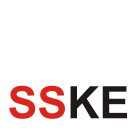From SSKE
| Line 1: | Line 1: | ||
| − | <font face="Times New Roman, serif"><font size="2"><font style="font-size: 13pt" size="3">''Service science''</font><font style="font-size: 13pt" size="3"> is short for </font><font style="font-size: 13pt" size="3">''Service Science, Management, Engineering, and Design''</font><font style="font-size: 13pt" size="3">, also known as SSMED.</font></font></font> <font face="Times New Roman, serif"><font style="font-size: 13pt" size="3">It began as a ‘call to action,’ focusing academics, businesses, and governments on the need for research and education in areas related to service.</font></font> <font face="Times New Roman, serif"><font style="font-size: 13pt" size="3">After all, the service sector (as traditionally measured) has grown to be the largest share of gross domestic product and employment for all major industrialized countries. Now, service science has grown into a global initiative involving hundreds of organizations and thousands of people who have begun to create service innovation roadmaps and to invest in expanding the body of knowledge about service systems and networks.</font></font> <font face="Times New Roman, serif"><font style="font-size: 13pt" size="3">But exactly what counts as service science?</font></font> <font face="Times New Roman, serif"><font style="font-size: 13pt" size="3">Simply put, <span style="display: none" data-cke-bookmark="1"> </span>service science aims to explain and improve interactions in which multiple entities work together to achieve win-win outcomes or mutual benefits</font></font><span style="display: none" data-cke-bookmark="1"> | + | <font face="Times New Roman, serif"><font size="2"><font style="font-size: 13pt" size="3">''Service science'' </font><font style="font-size: 13pt" size="3">is short for </font><font style="font-size: 13pt" size="3">''Service Science, Management, Engineering, and Design''</font><font style="font-size: 13pt" size="3">, also known as SSMED.</font></font></font> <font face="Times New Roman, serif"><font style="font-size: 13pt" size="3">It began as a ‘call to action,’ focusing academics, businesses, and governments on the need for research and education in areas related to service.</font></font> <font face="Times New Roman, serif"><font style="font-size: 13pt" size="3"></font></font> |
| + | |||
| + | <font face="Times New Roman, serif"><font style="font-size: 13pt" size="3">After all, the service sector (as traditionally measured) has grown to be the largest share of gross domestic product and employment for all major industrialized countries. Now, service science has grown into a global initiative involving hundreds of organizations and thousands of people who have begun to create service innovation roadmaps and to invest in expanding the body of knowledge about service systems and networks.</font></font> | ||
| + | |||
| + | <font face="Times New Roman, serif"><font style="font-size: 13pt" size="3">But exactly what counts as service science?</font></font> <font face="Times New Roman, serif"><font style="font-size: 13pt" size="3"></font></font> | ||
| + | |||
| + | <font face="Times New Roman, serif"><font style="font-size: 13pt" size="3">Simply put, <span style="display: none" data-cke-bookmark="1"> </span>service science aims to explain and improve interactions in which multiple entities work together to achieve win-win outcomes or mutual benefits</font></font><span style="display: none" data-cke-bookmark="1"></span>. | ||
| + | |||
| + | [[Category:SSKE Knowledge/Service Science Fundamental]] | ||
Revision as of 06:15, 4 July 2012
Service science is short for Service Science, Management, Engineering, and Design, also known as SSMED. It began as a ‘call to action,’ focusing academics, businesses, and governments on the need for research and education in areas related to service.
After all, the service sector (as traditionally measured) has grown to be the largest share of gross domestic product and employment for all major industrialized countries. Now, service science has grown into a global initiative involving hundreds of organizations and thousands of people who have begun to create service innovation roadmaps and to invest in expanding the body of knowledge about service systems and networks.
But exactly what counts as service science?
Simply put, service science aims to explain and improve interactions in which multiple entities work together to achieve win-win outcomes or mutual benefits.



